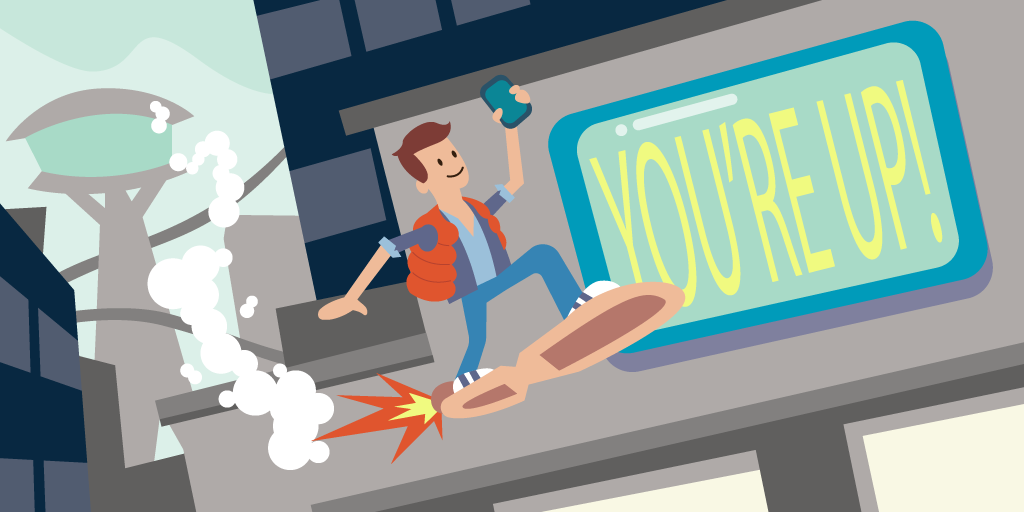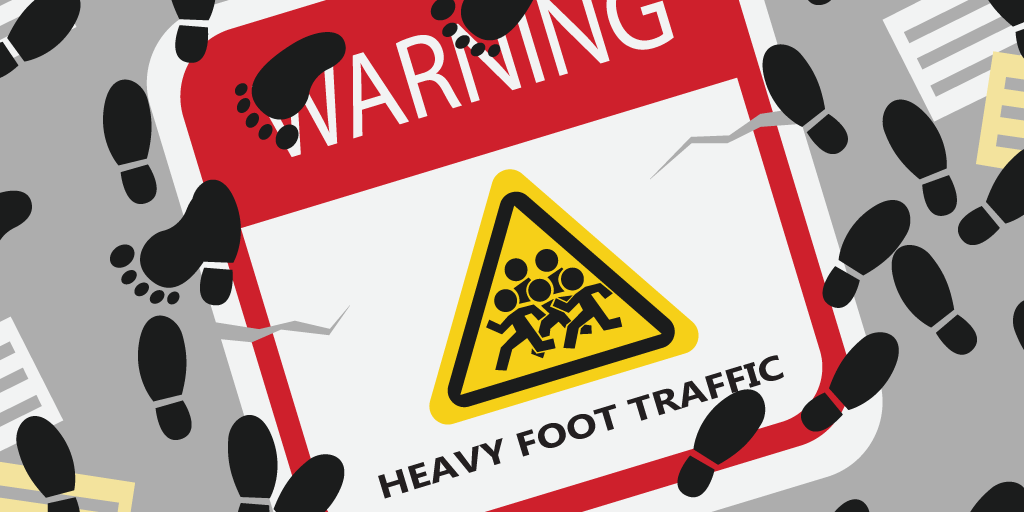Every shopper has succumbed to an unplanned purchase at one time or another. Studies have found that one third of shoppers make at least one spontaneous purchase each week.
Even you, dear reader, can’t deny it.
Maybe it was a late-night “buy” on Amazon, or a grocery cart loaded with candy and snacks not on the pre-approved shopping list.
Impulse buying behavior is a fact of shopping, an inevitable byproduct of the consumer experience.
The question is, how can businesses make use of impulse purchases, along with what we know about queuing, to boost revenue?
A Buyer’s Definition of Impulse Purchase
First of all, what is an “impulse purchase”?
Let’s get academic here for a moment and say that an impulse purchase means buying an item without intending the purchase prior to entering the store. For many publications, this is a substantial enough definition of impulse purchasing.
Impulse shopping is usually accompanied by a degree of guilt for some buyers. Especially when you end up spontaneously purchasing an infomercial off-brand pirate sword collection at three in the morning.
(Don’t look at me like that.)
But despite the occasional guilt trip, unplanned purchases actually offer some benefits too. When properly used, impulse purchases can make queues tolerable — and even entertaining.
Optimized Queues for Impulse Buying

When businesses harness customer’s tendency to make spontaneous purchases, they can take customer’s minds off the queueing process. Instead of silently feeling frustrated, customers have their eyes magnetized to merchandise.
But the opposite is also true: When you use queuing solutions to improve the waiting line situation in your business, it boosts impulse purchases.
Keep in mind, A.T. Kearney found that 40% of consumers spend more money than they had planned to in stores. That’s almost one in two customers — half of the people you see in the store are going to make impulse sales.
Let’s place ourselves in their shoes.
Imagine you’re in line, surrounded by wacky gizmos and colorful doohickeys — like fidget spinners. (Hey, look at us being topical!)
You’re no longer looking at your watch. Instead, you gaze across the various products and wonder, “Do I want that? Do I need that?”
Impulse buying behavior kicks in, and the checkout line is transformed from tedious necessity into opportunity. The shopping experience is extended by impulse products.
One Line for Impulse Purchases
Enticing and distracting customers with impulse products is best achieved with a single serpentine line — which is also more effective than multiple lines for multiple registers.
A single line enables businesses to more easily stock shelves, (reducing the strain on logistics) and creates more shelf space that can be better utilized for a variety of impulse products that every customer will see.
It also gives customers more freedom to move around as they wait in line—while also keeping their spot.
The point is, intending to increase customer’s satisfaction has the happy byproduct of increasing sales.
Using TVs to Motivate Impulse Purchases

Waiting in line isn’t exactly a riveting experience. Even people who study queues do so to reduce the tension and tedium of waiting.
We all know this, as we can all relate to excruciating waiting times. What do we do about it?
Digital signage (televisions) is a key technology for making queues exciting — or, at the very least, entertaining enough. But it has an added bonus.
Digital signage can be used to advertise impulse products at the last minute. It is your means of inspiring unplanned purchases before a customer checks out.
Remember, most customers shop on autopilot.
Pairing your queue management display with another TV screen that shows products on sale may result in some surprising last-minute purchases. When they check your queue monitor, your customers will shift their gaze to a nearby screen with products.
This additional display may help them remember that they, for example, needed to stock up on paper towels, cat food, or plasticky off-brand pirate swords.
(Again, don’t look at me like that.)
Keep in mind, though: Visuals make all the difference. The more attractive — or necessary — a product, the more likely digital signage will inspire impulse buying.
Laying Out a Store to Motivate Impulse Purchases
Impulse purchases can’t occur unless a store is organized to encourage them. A store has to become an impulse store.
Yes, that’s stating the obvious, but we have to be clear before we segue: How to design a store for impulse sales?
”The average shopper spends 15 seconds at the supermarket shelf per category, notices less than 40% of products, focuses their attention on point-of-sale materials for 1.6 seconds and typically compares prices between just two products.”
The takeaway? Store layouts have to meet the customer psychology of impulse buying behavior.
Knowing how fleeting attention spans are — and knowing that shoppers typically navigate stores like they’re driven by algorithms — we can sketch a blueprint for our updated store’s design.
Where Impulse Purchases Occur

Since 2007, gum sales have dropped by 15%. If you’ve been following the industry, you’d also know that 2007 was the year the iPhone was first launched.
Putting two plus two gives us this: Customers are so preoccupied with their smartphones that they don’t pay attention to impulse purchase “baits” at the checkout counter.
Impulse buying generally occurs in three places within a store:
The entrance.
A shopper walks into the brisk air of the store and immediately sees a centerfold table with headphones, or freshly baked bread. While they may not pick up the item, its presence becomes locked in their mind as a potential spontaneous purchase.
While shopping.
Strategically placed items en route to the shopper’s destination can arouse interest. Imagine somebody is buying club soda to mix drinks that night: a tasteful display of ibuprofen may make the shopper realize they’re going to wake up with a hangover, and impulse purchase the medicine.
Near the checkout.
This is one we already know: items placed just before the register or the checkout. This is the last opportunity to entice customers to make an impulse purchase.
Now that we know where impulse purchases occur, how else can we re-strategize to catalyze impulse buying behavior?
The Role of Secondary Displays
“Secondary displays” simply refers to shelving products in more than one location. For example, diapers aren’t just stocked in the baby section but near the liquor aisle as well.
Why?
Well, the old adage says that the pairing of products with a secondary display can spark customers to make an unplanned purchase.
For example, imagine you go to purchase a phone and see headphones on a display nearby, and think “Well, I do need a new pair of headphones!” So, you make the unplanned purchase of headphones.
Secondary displays are all about getting products in front of customers who normally wouldn’t visit the space where that product is located, i.e. inspiring an impulse purchase.
To use secondary displays properly, businesses have to understand their customers. What products blend together? Why do my customers shop at my store? What are they shopping for?
A healthy data-driven understanding of customer’s behaviors helps businesses strategize their displays to inspire impulse purchases.
Impulse purchases aren’t just a means of increasing revenue, but are an effective means of improving the queuing experience.
Smartly designed stores that understand impulse purchases improve the shopper’s experience, by meeting their needs and desires — sometimes even before the customers realize that themselves.
Qminder is a tool that helps you get these impressive impulse purchase results, by solving your queuing situation and providing you with relevant customer insights.
Sign up for a 14-day free trial to start encouraging impulse buys in your store.






